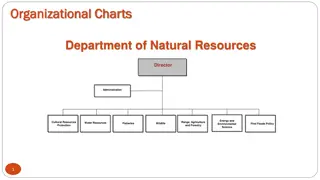
Pricing Strategies and New Product Pricing – Comprehensive Guide
Explore pricing strategies such as market skimming, market penetration, by-product pricing, and product bundle pricing. Learn how companies determine pricing to maximize profits and adjust prices for varying customer needs. Get insights into new-product pricing strategies and public policy implications.
Download Presentation

Please find below an Image/Link to download the presentation.
The content on the website is provided AS IS for your information and personal use only. It may not be sold, licensed, or shared on other websites without obtaining consent from the author. If you encounter any issues during the download, it is possible that the publisher has removed the file from their server.
You are allowed to download the files provided on this website for personal or commercial use, subject to the condition that they are used lawfully. All files are the property of their respective owners.
The content on the website is provided AS IS for your information and personal use only. It may not be sold, licensed, or shared on other websites without obtaining consent from the author.
E N D
Presentation Transcript
DR.D.GNANA RANI SARAL ASSISTANT PROFESSOR DEPARTMENT OF ECONOMICS
After studying this chapter, you should be able to: Describe the major strategies for pricing initiative and new products Explain how companies find a set of prices that maximize the profits from the total product mix Discuss how companies adjust their prices to take into account different types of customers and situations Discuss the key issues related to initiating and responding to price changes 11- 2
New-Product Pricing Strategies Product Mix Pricing Strategies Price Adjustment Strategies Price Changes Public Policy and Pricing 11- 3
Pricing Strategies Market skimming pricing Market penetration pricing 11- 4
Pricing Strategies Market skimming pricing is a strategy with high initial prices to skim revenue layers from the market. Product quality and image must support the price. Buyers must want the product at the price. Costs of producing the product in small volume should not cancel the advantage of higher prices. Competitors should not be able to enter the market easily. 11- 5
Pricing Strategies Market penetration pricing sets a low initial price in order to penetrate the market quickly and deeply to attract a large number of buyers quickly to gain market share. Price sensitive market Inverse relationship of production and distribution cost to sales growth Low prices must keep competition out of the market.
Pricing Strategies By-product pricing refers to products with little or no value produced as a result of the main product. Producers will seek little or no profit other than the cost to cover storage and delivery. 11-7
Pricing Strategies Product bundle pricing combines several products at a reduced price. 1 bottle: $2.70 Bundled 2 bottles: $4.90
Pricing Strategies Discount and allowance pricing Segmented pricing Psychological pricing Promotional pricing Geographical pricing Dynamic pricing International pricing
Pricing Strategies Discount and allowance pricing reduces prices to reward customer responses such as paying early or promoting the product. Discounts Allowances
Pricing Strategies Discounts Cash discount for paying promptly Quantity discount for buying in large volume Functional (trade) discount for selling, storing, distribution, and record keeping
Pricing Strategies Allowances Trade-in allowance for turning in an old item when buying a new one Promotional allowance to reward dealers for participating in advertising or sales support programs
Pricing Strategies Segmented pricing is used when a company sells a product at two or more prices even though the difference is not based on cost. Customer segment pricing Product form segment pricing Location pricing 11- 13
Pricing Strategies To be effective: Market must be segmentable Segments must show different degrees of demand Watching the market cannot exceed the extra revenue obtained from the price difference Must be legal
Pricing Strategies Customer segment pricing is when different customer pay for different prices for the same product or service. Product form segment pricing is when different versions of the product are priced differently but not according to differences in cost. Location pricing is when the product is sold in different geographic areas and priced differently in those areas even though the cost is the same.
Pricing Strategies Revenue management charges the right customer at the right price at the right time. Yield management balances price and demand.
Pricing Strategies Psychological pricing occurs when sellers consider the psychology of prices and not simply the economics. Reference prices are prices that buyers carry in their minds and refer to when looking at a given product. Noting current prices Remembering past prices Assessing the buying situations
Pricing Strategies Promotional pricing is when prices are temporarily priced below list price or cost to increase demand. Loss leaders Special event pricing Cash rebates Low interest financing Longer warrantees Free maintenance
Pricing Strategies Loss leaders are products sold below cost to attract customers in the hope they will buy other items at normal markups. Special event pricing is used to attract customers during certain seasons or periods. Cash rebates are given to consumers who buy products within a specified time. Low interest financing, longer warrantees, and free maintenance lower the consumer s total price.
Pricing Strategies Risks of promotional pricing Used too frequently Copies by competitors can create deal- prone customers who will wait for promotions and avoid buying at regular price. Creates price wars.
Pricing Strategies Dynamic pricing International pricing
Pricing Strategies Dynamic pricing is when prices are adjusted continually to meet the characteristics and needs of the individual customer and situations.
Pricing Strategies International pricing is when prices are set in a specific country based on country-specific factors. Economic conditions Competitive conditions Laws and regulations Infrastructure Company marketing objectives
Initiating Pricing Changes Price cuts Price increases
Initiating Pricing Changes Price cuts is a reduction in selling price. Excess capacity Increase market share Price increases is an increase in selling price Cost inflation Increased demand and lack of supply
Buyer Reactions to Pricing Changes Price cuts New models will be available Models are not selling well Quality issues Price increases Product is hot Company greed






















